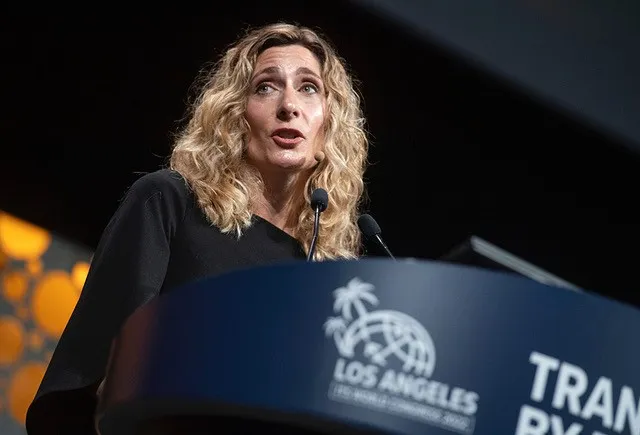Intelligent Transportation Society of America (
“We were thrilled to join President Obama to demonstrate the latest connected vehicle technologies that are making our roads safer and our infrastructure smarter,” said ITS America President and CEO Scott Belcher. “Vehicle-to-vehicle and vehicle-to-infrastructure communication technology represents the next giant leap in automotive safety, providing the ability for cars to ‘talk’ to each other and the world around them to avoid crashes. And we’re not just talking about cars talking to other cars but about cars talking to bikes, trucks talking to motorcycles, buses talking to pedestrians, and even traffic signals communicating with vehicles to help prevent crashes and reduce traffic tie-ups. Our members have been working on these technologies for years, investing billions of dollars to develop innovative solutions to our nation’s transportation and infrastructure challenges. We are excited the President recognises the life and time-saving benefits these innovations represent.”
Belcher continued, “The
“We want to thank President Obama for his strong commitment to investing in this critical research, and look forward to working with the President and Congress to pass a long-term transportation bill with sustainable funding that will allow for continued infrastructure investment while also advancing the research and deployment of V2V, V2I and other innovations that will make our transportation system safer and smarter.”
President Obama says V2V and V2I technology will save lives
US president Barack Obama has highlighted his Administration’s support for intelligent transportation systems as a job creator and high-tech solution for reducing vehicle crashes and traffic gridlock.
Intelligent Transportation Society of America (ITS America) members and staff joined President Obama at the Turner-Fairbank Highway Research Center in McLean, Virginia, where the President toured the research and testing facility and delivered remarks on the importance of vehicle-to-vehicle (V2V) and vehicl
July 16, 2014
Read time: 3 mins
US president Barack Obama has highlighted his Administration’s support for intelligent transportation systems as a job creator and high-tech solution for reducing vehicle crashes and traffic gridlock.








